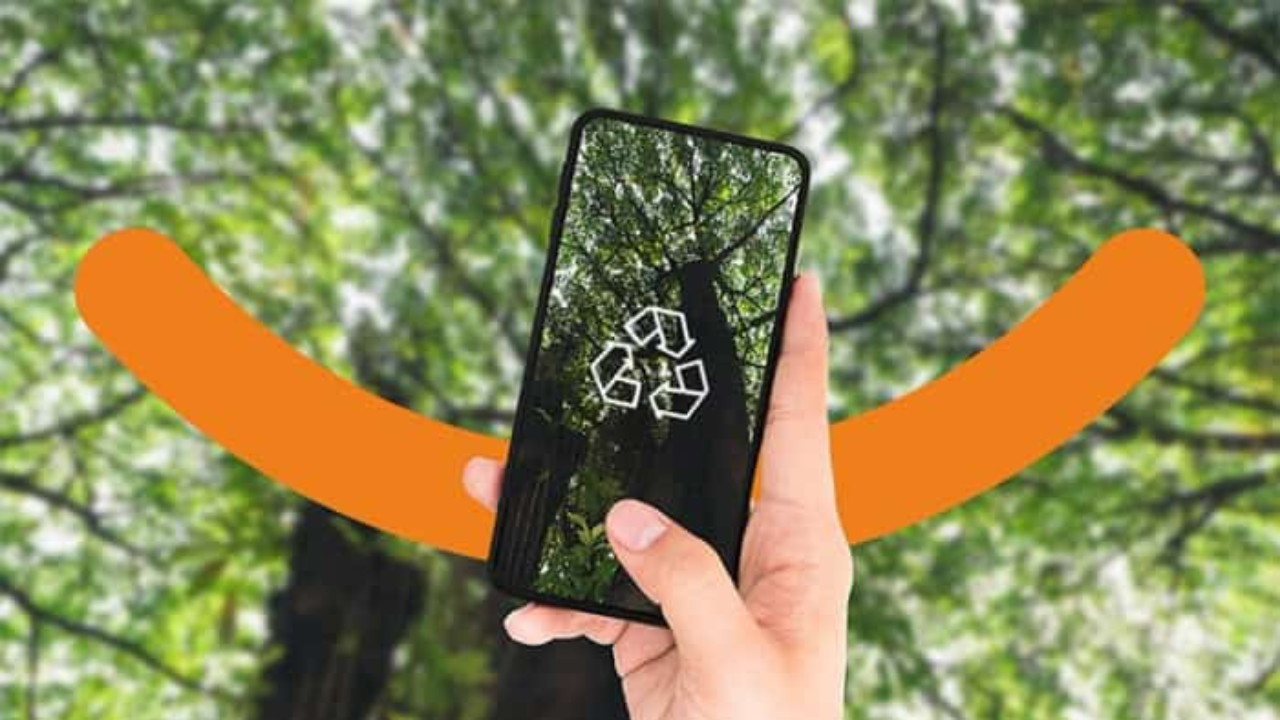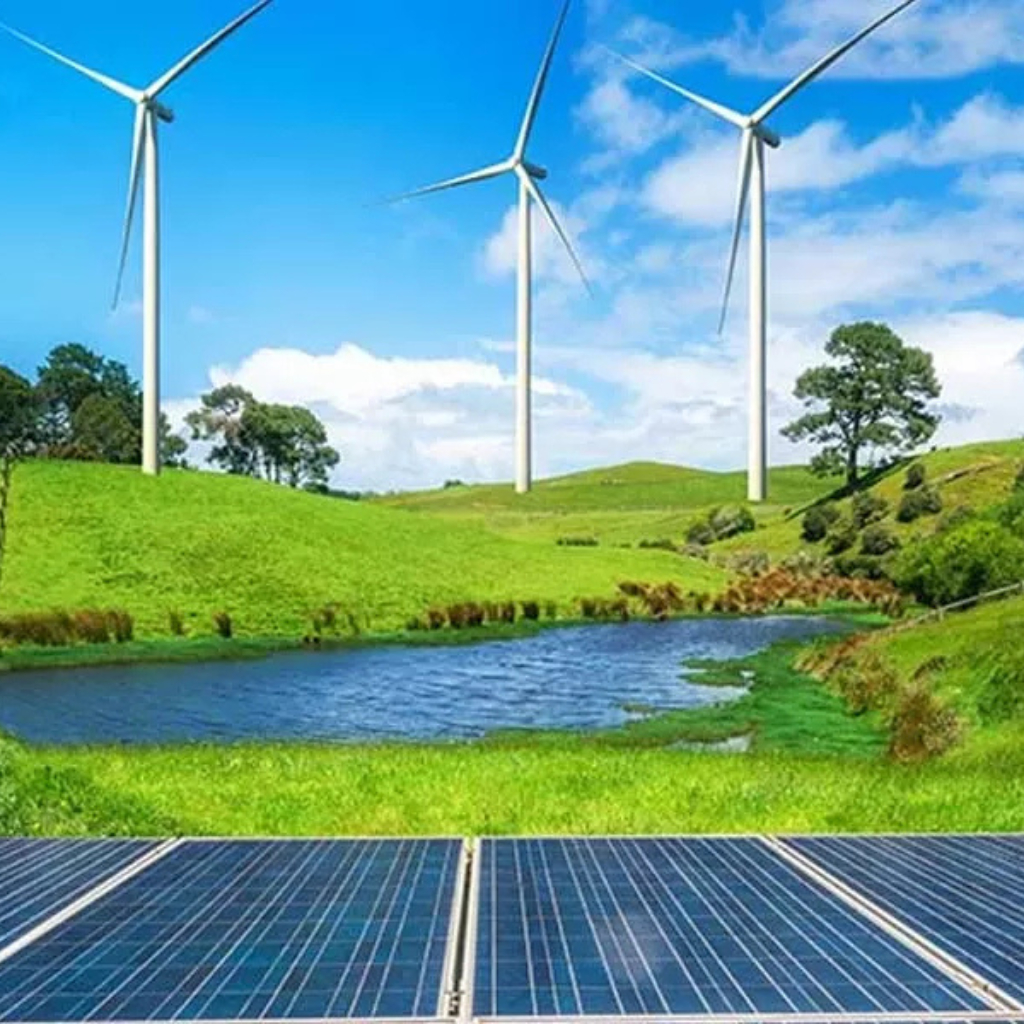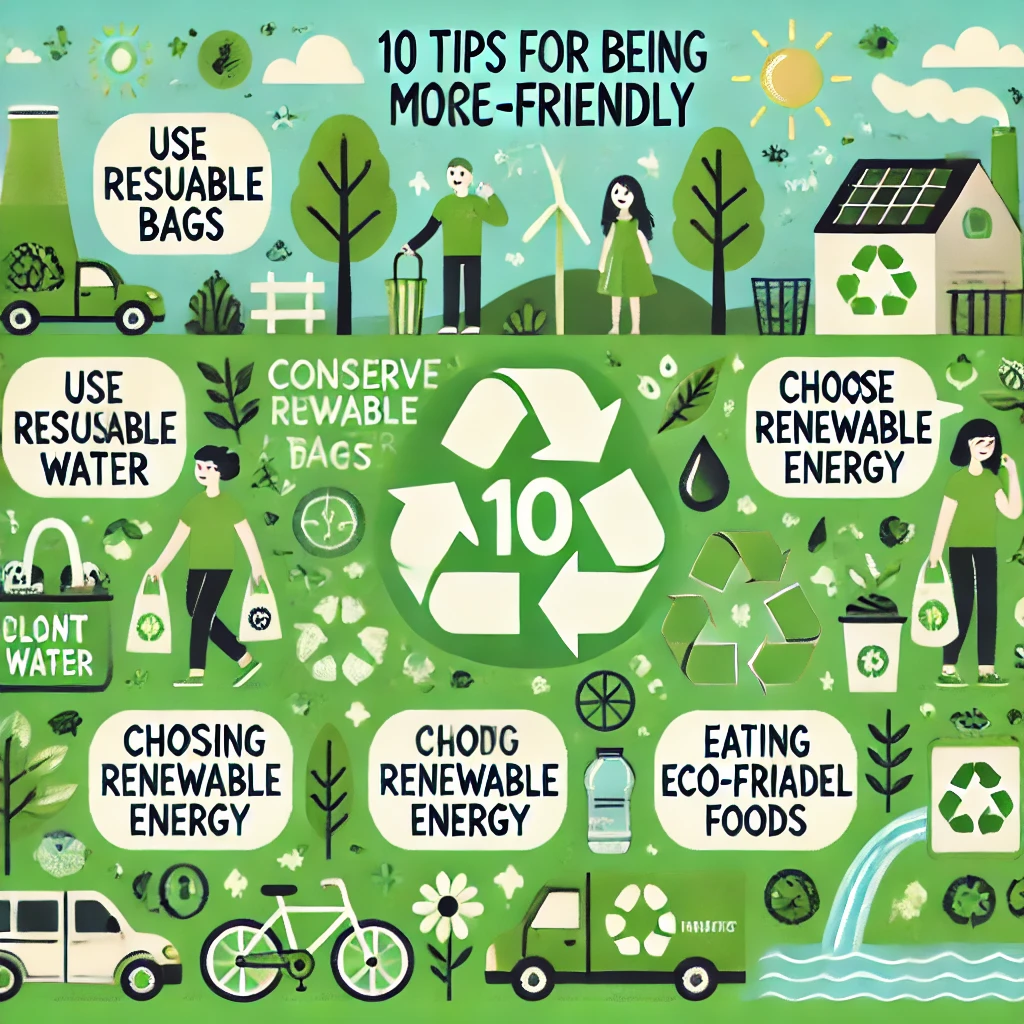In today’s world, eco-friendly living has become a vital part of ensuring a sustainable future. While governments and large corporations play key roles in addressing climate change, the impact of individual actions cannot be overlooked. Small changes in our daily lives such as the way we use energy, reduce waste, and make conscious consumer choices can accumulate to make a significant environmental difference.
One area where individuals have a unique opportunity to contribute is through their use of technology, particularly smartphones. These devices are far more than tools for communication and entertainment; they are multifaceted gadgets that can serve as platforms for promoting eco-friendly practices. Smartphones, when used responsibly, can help reduce waste, lower carbon footprints, and encourage greener choices.
By making deliberate decisions on how we interact with our devices, we can align our technology use with sustainability goals. From reducing paper waste to supporting green manufacturers and making more informed lifestyle choices, smartphones can be powerful allies in the pursuit of a healthier planet. In this article, we will explore how you can harness the full eco-friendly potential of your smartphone, making a positive impact while staying connected in an increasingly digital world.
Repair Benefits: Extending Device Lifespan
In our fast-paced world, it’s easy to fall into the trap of discarding a smartphone when it begins to show signs of wear, whether from a cracked screen or battery issues. However, repairing your device rather than replacing it can make a significant difference in reducing environmental harm. By choosing to repair your smartphone, you not only extend its lifespan but also contribute to a more sustainable future.
Improper disposal of smartphones has far-reaching environmental consequences. Many devices contain hazardous materials such as mercury, lead, and cadmium, which can leach into the soil and water supply if disposed of in landfills. When smartphones are sent to poorly managed landfills, these toxic chemicals can seep into the environment, harming ecosystems and potentially contaminating local water sources. Additionally, the incineration of electronic waste releases harmful greenhouse gases and toxins into the air, contributing to air pollution and climate change.
The growing global issue of overflowing landfills is another reason to reconsider tossing a smartphone at the first sign of trouble. Although a single device may take up minimal space, consider the sheer number of smartphones discarded worldwide each year. These discarded electronics can add up quickly, exacerbating the waste crisis. By opting for a repair, you are not only saving your device from the landfill but also minimizing your overall environmental footprint.
Mobile repair services offer a more eco-friendly solution. Many repair technicians use sustainable practices, sourcing parts from existing devices and recycling components whenever possible. By supporting repair businesses, you contribute to a circular economy where devices are kept in use longer, and fewer resources are needed to create new products. In addition, choosing a local repair service can help reduce the carbon footprint associated with shipping and manufacturing new devices.
Some mobile repair services, like Like Wize Repair, make the process even more convenient by coming to your location and providing quick repairs that can be done within an hour. With a warranty on their work, these services provide both reliability and peace of mind while supporting environmentally responsible practices. Choosing to repair your smartphone, rather than sending it to the landfill, is a simple yet impactful way to align your tech habits with your eco-friendly values.
Supporting Closed Loop Manufacturers
In the world of sustainable manufacturing, the concept of a “closed-loop” system stands out as a powerful method for minimizing waste and maximizing resource efficiency. Closed-loop manufacturing refers to a production process where products are designed with their end-of-life disposal in mind, allowing for the recycling and repurposing of materials into new products. In the case of smartphones, this means that once a device reaches the end of its life, valuable materials like metals, plastics, and glass can be recovered, purified, and reused in the production of new devices. This contrasts sharply with traditional manufacturing processes that rely heavily on new resources, often at great environmental cost.
The environmental impact of choosing smartphones from manufacturers that implement closed-loop practices is profound. First, by recycling old smartphones, these companies reduce the demand for virgin materials, which often involve harmful mining practices that can devastate ecosystems and communities. Mining for metals like gold, lithium, and cobalt can result in deforestation, soil degradation, and significant pollution, affecting both land and water. In contrast, using recycled materials reduces the need for such destructive practices and lowers the carbon footprint associated with raw material extraction.
Moreover, closed-loop manufacturers typically prioritize ethically sourced materials, ensuring that the raw materials used in production are obtained in a way that respects both environmental standards and human rights. Many companies are now committing to transparency, showing consumers where and how their materials are sourced. This ensures that the supply chain is free from exploitation, ensuring that the people involved in sourcing and manufacturing the components are treated fairly.
By supporting brands that adopt these sustainable practices, you’re not just purchasing a product—you’re encouraging the broader industry to follow suit. As consumer demand for ethically produced and eco-friendly products grows, other manufacturers are more likely to adopt closed-loop practices to remain competitive. This shift toward more responsible production helps drive a much-needed transformation within the tech industry, pushing the entire sector toward a greener, more sustainable future.
One example of this practice is companies that take back old smartphones for recycling programs. Many manufacturers will accept your old phone and ensure it’s properly dismantled, with components that can be reused in new devices. Some companies even offer trade-in programs, where you can exchange your old device for a discount on a new one, incentivizing customers to recycle while also lowering their environmental impact.
Supporting closed-loop manufacturers when purchasing your next smartphone is a simple yet impactful choice that benefits both the environment and the industry as a whole. By promoting the use of recycled materials and ethically sourced components, you are not only reducing the environmental cost of smartphone production but also encouraging widespread adoption of sustainable practices in the tech industry.
Lifestyle Changes Through Eco-Friendly Apps
Smartphones are more than just tools for communication and entertainment—they have become integral to our daily lives, offering countless ways to integrate eco-friendly practices into our routines. Thanks to the growing presence of eco-conscious apps, smartphones can play a crucial role in promoting sustainable behaviors and supporting users in their green goals. These apps not only make sustainable living more convenient, but they also provide practical solutions to help individuals make smarter, greener choices on a daily basis.
One of the key benefits of eco-friendly apps is their ability to guide users toward more environmentally conscious decisions. From reducing car emissions to supporting local sustainable businesses, these apps help users track and adopt behaviors that contribute to a healthier planet. Here are a few notable categories of eco-friendly apps that can help make your lifestyle more sustainable:
- Carpooling Apps: Traditional car travel is a significant contributor to greenhouse gas emissions, but carpooling apps offer a simple solution by allowing you to share rides with others who are traveling in the same direction. Apps like BlaBlaCar and Lyft Line help users connect with others for carpooling, reducing the number of cars on the road, which in turn lowers emissions and reduces traffic congestion. By using these apps, users contribute to a more sustainable transportation system, reducing their carbon footprint while saving on fuel costs.
- Food Delivery Apps with Eco-Friendly Practices: Many food delivery apps now partner with restaurants that prioritize sustainability. From choosing organic ingredients to using eco-friendly packaging, these apps allow users to select food options that align with their eco-conscious values. Some apps, like Uber Eats and Grubhub, have even introduced sustainability features that highlight restaurants offering plant-based, organic, or locally-sourced food. Additionally, some services aim to reduce waste by encouraging customers to opt for no utensils or napkins during delivery, which can significantly cut down on disposable plastic use.
- Recycling Apps: Recycling is one of the most effective ways to reduce waste and conserve resources, but it can be hard to know where to start or where to drop off recyclables. Apps like iRecycle or RecycleNation simplify this process by helping users find nearby recycling centers, schedule pick-ups for materials, and provide tips on how to properly recycle various items. These apps also educate users on which items are recyclable and which are not, reducing contamination in recycling streams and ensuring that materials can be effectively reused.
- Energy-Saving Apps: Smartphones can help users save energy in their homes by giving them control over their lights, appliances, and thermostats remotely. Apps like Google Nest and Ecobee allow users to manage their home’s heating and cooling systems, helping to reduce energy consumption and lower utility bills. Similarly, energy tracking apps like JouleBug make it easy to monitor daily habits and track how much energy is being saved by small actions like turning off lights, using energy-efficient appliances, or adjusting the thermostat. Over time, these actions add up, leading to significant reductions in energy use and a smaller carbon footprint.
- Electric Vehicle (EV) Support Apps: As electric vehicles become more popular, apps designed to assist EV owners are increasingly useful. Apps like PlugShare and ChargePoint help users locate charging stations for their electric vehicles, track the status of charging, and plan their travel routes to include charging stops. By making EV ownership more convenient, these apps support a transition away from fossil fuel-powered cars, contributing to a cleaner, greener transportation future.
What sets these eco-friendly apps apart is their ability to help users stay disciplined and informed about their environmental goals. Many apps offer reminders, track progress, and provide feedback, helping individuals build lasting sustainable habits. For example, carpooling apps might remind you of upcoming rides, while energy-saving apps could notify you when you’ve exceeded your energy-saving targets for the week. The constant stream of information, reminders, and encouragement keeps sustainability front of mind, making it easier for users to maintain their eco-friendly lifestyle.
Smartphone apps are a powerful tool for promoting sustainable behavior. By offering practical, real-time solutions, they help users make small changes that add up to significant environmental benefits. From reducing car emissions and cutting energy use to supporting sustainable food practices and making recycling easier, eco-friendly apps empower users to live greener, more responsible lives, all while making the process more accessible, convenient, and engaging.
Reducing Paper Usage Through Digitization
One of the simplest yet most effective ways to reduce our environmental impact is by cutting down on paper usage. Paper production, while essential, comes at a significant environmental cost, from deforestation to the energy required for manufacturing and transportation. By embracing digitization, we can significantly reduce the amount of paper we consume, helping preserve natural resources and reduce the strain on the environment.
Smartphones, as multifaceted devices, provide the perfect platform for transitioning to a paperless lifestyle. By digitizing documents, managing finances digitally, and even simplifying everyday tasks like making shopping lists, smartphones enable users to reduce their reliance on paper in numerous ways. Let’s explore the various ways smartphones can help us go paperless and the positive environmental impacts that come with it:
- Digitizing Documents: One of the most significant contributors to paper waste is the printing of documents for record-keeping, office work, and personal use. Smartphones are equipped with scanning apps, such as Adobe Scan and CamScanner, that allow users to digitize paper documents effortlessly. Whether it’s important contracts, receipts, or personal notes, scanning them and storing them digitally reduces the need to print hard copies. By creating digital archives, you not only save paper but also make your documents more accessible and organized, reducing clutter and preserving information long-term without relying on physical storage.
- Digital Banking and Payments: Paper money and traditional banking practices are gradually being replaced by digital banking, which offers a range of eco-friendly advantages. Many smartphones come preloaded with mobile payment apps such as Apple Pay, Google Pay, and PayPal, which allow you to make payments and transfer money without using paper checks, bills, or receipts. Furthermore, digital banking eliminates the need for printed bank statements, which can often pile up and end up in landfills. By opting for electronic transactions and paperless billing, users help reduce paper consumption while also enjoying the added benefits of convenience and security.
- Shopping Lists and Notes: Gone are the days of jotting down shopping lists or reminders on pieces of scrap paper. With smartphones, apps like Google Keep, Evernote, and Microsoft OneNote allow users to create and store lists digitally. These apps not only help keep your tasks and shopping organized, but they also prevent paper waste, which would otherwise be used for these short-term needs. Whether you’re planning a grocery run or making a to-do list, these digital tools are a sustainable alternative to traditional paper-based methods.
The connection between digitization and saving trees is clear. Paper products come primarily from trees, and deforestation remains a significant environmental concern. According to estimates, approximately 2.5 billion trees are cut down each year to meet global paper demand. Every time we opt for digital solutions instead of paper-based alternatives, we reduce the demand for paper and contribute to saving countless trees. In fact, it’s estimated that if every household in the U.S. switched to paperless billing, the country could save around 18 million trees annually.
The benefits extend beyond just trees. Reducing paper consumption also decreases water and energy use, as paper production is a highly resource-intensive process. Producing a single ton of paper requires about 7,000 gallons of water and consumes a significant amount of energy. By transitioning to digital alternatives, we are helping conserve water, lower energy consumption, and reduce greenhouse gas emissions associated with paper manufacturing.
Smartphones are invaluable tools in the push toward a paperless society. From digitizing documents and managing finances to creating shopping lists, smartphones offer a wide range of opportunities to cut down on paper use. This simple yet impactful change not only saves trees but also reduces energy and water consumption, making it an important step toward a more sustainable future. By adopting digital alternatives, we can all contribute to reducing paper waste and promoting a greener planet.
Promoting Environmental Awareness Through Social Media
Smartphones serve not just as tools for communication and entertainment but also as powerful platforms for spreading awareness and driving change. Social media has become an indispensable tool in environmental activism, offering a global stage for individuals, organizations, and influencers to raise awareness about sustainability issues, advocate for policy changes, and inspire others to adopt eco-friendly practices.
The integration of smartphones with social media apps such as Instagram, Twitter, TikTok, and Facebook allows users to engage in environmental advocacy in ways that were previously unimaginable. Here’s how your smartphone can play a significant role in promoting environmental awareness:
- Engaging in Environmental Activism: Smartphones enable individuals to easily access and participate in the growing online environmental movement. Social media platforms are filled with campaigns focused on climate change, wildlife conservation, recycling, and sustainable living practices. By following eco-conscious influencers, joining sustainability groups, and sharing relevant content, users can actively contribute to these causes. Whether it’s participating in an online petition, supporting a local cleanup effort, or simply educating others through thoughtful posts, smartphones allow people to engage with and support environmental issues without leaving their homes.
- The Influence of Environmental Influencers: Social media influencers have a unique ability to shape public opinion and inspire large audiences. Environmental influencers, in particular, are leading the charge by using their platforms to promote eco-friendly lifestyles, sustainable products, and environmental protection initiatives. These influencers share practical tips on reducing waste, choosing sustainable products, and living a greener life. Their reach and credibility make them powerful allies in spreading environmental awareness. As a smartphone user, you can amplify these messages by following, sharing, and engaging with eco-conscious influencers, which helps to further the movement.
- Sharing Eco-Friendly Practices, Products, and Information: One of the most effective ways to promote environmental awareness via smartphones is by sharing content that educates and inspires others. This can range from personal experiences, tips for reducing energy consumption, or new eco-friendly products to updates on environmental policies and global initiatives. Platforms like Instagram and Pinterest are great for showcasing green lifestyle choices, such as zero-waste living, sustainable fashion, and eco-conscious cooking. Twitter and Facebook provide users with the opportunity to engage in discussions and share news about the latest environmental research, climate reports, and environmental policy changes.
The power of smartphones lies not only in creating content but also in facilitating communication. You can easily join conversations about environmental topics by using hashtags, joining Facebook groups, or participating in Twitter threads. This real-time sharing of ideas and information helps spread eco-friendly practices and creates a sense of community around environmental issues. Your smartphone becomes a window through which you can contribute to the global conversation on sustainability and motivate others to adopt positive environmental behaviors.
- Promoting Eco-Friendly Products and Brands: Smartphones also make it easier for consumers to discover and support eco-conscious brands and products. With the rise of conscious consumerism, people are becoming more aware of the environmental impact of the products they buy. Smartphone users can follow brands that prioritize sustainability, share information about ethical companies, and recommend products that reduce environmental footprints. Whether it’s reusable items, energy-efficient devices, or organic clothing, social media can become a hub for promoting products that align with eco-friendly values.
- Raising Awareness of Environmental Events: Smartphones can also serve as a valuable tool for organizing and promoting environmental events, such as Earth Day celebrations, community recycling drives, or global climate strikes. Through social media platforms, users can spread the word, invite others to participate, and document these events to inspire further action. By attending or even just sharing these events, smartphone users help amplify the message of environmental conservation and mobilize others to take action.
Smartphones offer an unparalleled opportunity to raise environmental awareness and engage in activism. By leveraging social media, smartphone users can connect with like-minded individuals, support environmental influencers, share eco-friendly practices, and help promote sustainable products and initiatives. The influence of social media in shaping public opinion makes smartphones a powerful tool in the fight against environmental degradation. By using these platforms responsibly, individuals can contribute to a global movement dedicated to preserving our planet for future generations.
Read more: How does Storage Space help in Green Energy?
Conclusion
Smartphones, often seen as simple communication tools, have evolved into powerful instruments for promoting environmental sustainability. From helping reduce waste and paper consumption to supporting ethical manufacturing practices and fostering eco-friendly lifestyles, these devices are more than just a means of connection—they are catalysts for positive environmental change. Through conscious use of eco-friendly apps, promoting repair practices, supporting sustainable brands, and engaging in environmental activism via social media, smartphone users can play an active role in protecting our planet.
As we continue to rely on our smartphones for daily tasks, it’s crucial to recognize the environmental impact our choices can have. Every small step, from reducing electronic waste to adopting greener habits, adds up to significant change. By embracing these practices, we not only make a difference in our own lives but also contribute to the broader movement of sustainability. Ultimately, our smartphones can be a force for good in achieving a more eco-conscious, sustainable world—one click, app, and share at a time.


















